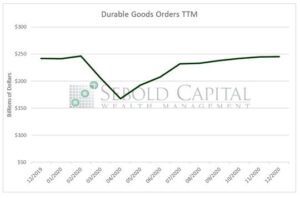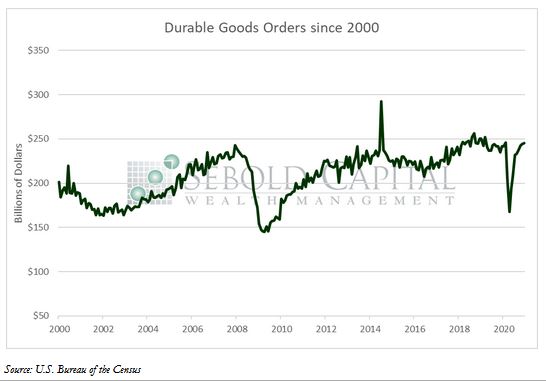 Durable goods orders, which are orders to buy products that are expected to last at least three years, indicate how busy factories will be in the near future. As the name suggests, durable orders provide a look into demand for equipment along with other big-ticket purchases, such as vehicles and appliances. An increase in capital spending and consumer purchases indicates an increase in business investment and personal consumption in GDP.
Durable goods orders, which are orders to buy products that are expected to last at least three years, indicate how busy factories will be in the near future. As the name suggests, durable orders provide a look into demand for equipment along with other big-ticket purchases, such as vehicles and appliances. An increase in capital spending and consumer purchases indicates an increase in business investment and personal consumption in GDP.
Durable goods increased by 0.2% to $245.3 billion in December, according to the U.S. Bureau of the Census’ advance estimate. Orders for capital goods, considered to be an indicator of business spending plans, increased by 0.6% to $232.5 billion. Both of these figures showed relatively weak growth compared to the last few months. However, even with the slowdown, orders for capital goods have almost returned to pre-pandemic levels.
The weaker gain in durable goods can mainly be attributed to problems among airline manufacturers and a decrease in defense orders. Investment in business equipment continues to be solid and may soon rise above pre-pandemic levels. Even as COVID-19 cases rose earlier last month and several new restrictions were imposed to try to contain the spread, the manufacturing industry faired relatively well. Many manufacturers have adapted to dealing with the restrictions and have gotten better at dealing with supply chain disruptions. Demand for business equipment remains stable and will likely continue to improve as the economy recovers.

January 27, 2021
